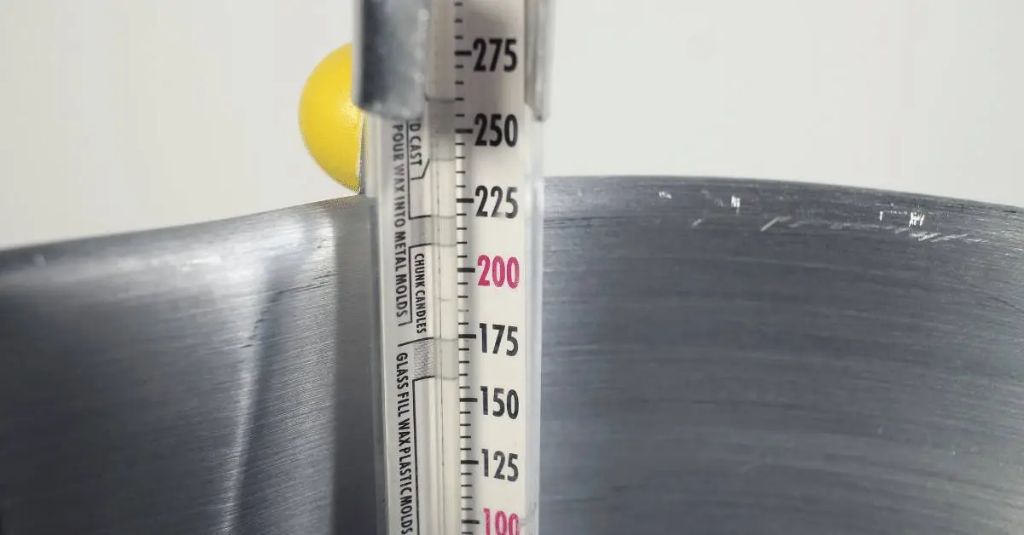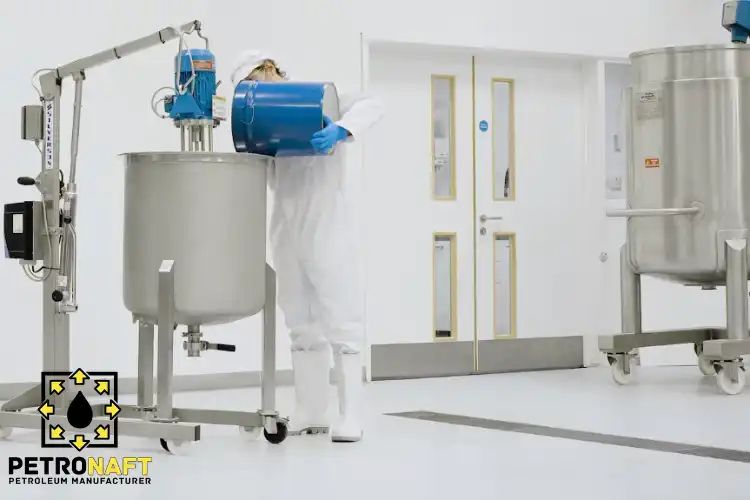What Temperature Does Candle Wax Solidify At?
Candle wax is a substance that melts when heated and solidifies when cooled. The wax is typically made from paraffin, a byproduct of petroleum refining. It is composed of hydrocarbons with melting points around 130-140°F (54-60°C). When candle wax melts, it transitions from a solid state to a liquid state. This process is called melting or fusion. The reverse process, when liquid wax cools and transitions back to a solid state, is called solidification or freezing. The temperature at which wax solidifies depends on its chemical composition and various external factors.
This article will explore the key properties of candle wax related to melting and solidification. We will examine the factors that influence the temperature at which liquid wax will turn back into a solid wax. Understanding wax solidification enables effective candle making by determining the ideal temperature ranges for pouring and cooling wax.
Chemical Composition of Candle Wax
There are several main types of wax commonly used to make candles. The chemical composition of each type varies.
Paraffin wax is the most common candle wax. It is a byproduct of petroleum refining and composed of straight and branched chain alkanes. Paraffin has a very stable chemical structure that provides a clean burn and optimal fragrance throw. (https://www.marthastewart.com/8061950/candle-wax-type-guide)
Beeswax is a natural wax produced by honey bees. The main chemical components are palmitate, palmitoleate, hydroxypalmitate and oleate esters of long chain alcohols. Beeswax burns slowly and has a subtle honey aroma. (https://candles.org/elements-of-a-candle/wax/)
Soy wax is made from hydrogenated soybean oil. Its main components are hydrogenated vegetable oil and smaller amounts of fatty acids, alcohols, hydrocarbons and esters. Soy wax is an environmentally friendly option that burns cleanly.
Palm wax comes from the leaves of palm trees. It is composed primarily of fatty acid esters like palmitic and oleic acids. Palm wax burns slowly and is often blended with other waxes.
Gel wax contains mineral oil along with a polymer resin that gives candles made from this wax a transparent, glass-like appearance.
Melting Point vs Solidification Point
The melting point and solidification point of a substance are not always the same temperature. The melting point is the temperature at which a solid begins to turn into a liquid. However, the solidification point – also known as the freezing point – is the temperature at which a liquid begins to turn into a solid.
This difference occurs due to a phenomenon called supercooling. Supercooling refers to cooling a liquid below its freezing point without it turning into a solid (Source: https://en.wikipedia.org/wiki/Supercooling). Pure crystalline solids like candle wax have a very defined melting point. However, the solidification point can be lower than the melting point due to supercooling (Source: https://chemed.chem.purdue.edu/genchem/topicreview/bp/ch14/melting.php).
Therefore, when melting candle wax, the melting point is reached and wax turns from solid to liquid. However, when cooling candle wax, the liquid can be supercooled below the melting point before it finally solidifies at the solidification point. So the solidification temperature is typically slightly lower than the melting point.
Typical Melting Points
The melting point of candle wax varies depending on the type of wax used. Here are some typical melting points for common candle waxes:

– Paraffin wax: 115-150°F (46-66°C) [1]
– Beeswax: 145-147°F (63-64°C) [2]
– Soy wax: 115-135°F (46-57°C)
– Palm wax: 126-143°F (52-61°C)
– Coconut wax: 76-82°F (24-28°C) [3]
Paraffin wax and beeswax have some of the highest melting points, making them ideal for candles. Soy wax and palm wax have moderate melting points. Coconut wax has the lowest melting point and is often blended with other waxes.
Factors Affecting Solidification Point
The temperature at which candle wax solidifies can vary based on several factors, including the wax’s chemical composition, as well as external elements that impact cooling and solidification:
Wax Additives – Most candle wax contains additives like dyes, fragrances, hardeners, etc. that can raise or lower the solidification point slightly. Additives like vybar and stearic acid increase hardness and raise solidification temperatures.1
Cooling Rate – Faster cooling leads to higher solidification points, while slower cooling lowers it. This is because wax molecules have less time to orient themselves into an organized crystalline structure when cooling quickly.2
Impurities – Contaminants introduced during processing or storage can disrupt the wax’s crystalline structure upon solidification. More impurities generally lower the solidification point.3
Measuring Solidification Point
There are a few different methods commonly used to measure the solidification point of candle wax:
Laboratory Testing – The most accurate way to determine the solidification point is through laboratory testing. This involves heating a sample of the wax to a liquid state, then slowly lowering the temperature while closely monitoring the wax. The point at which the wax solidifies is noted as the solidification point. Methods like differential scanning calorimetry can detect the precise temperature where the phase change occurs [1].
Cold Spoon Test – A simple DIY method is the cold spoon test. Melt a small amount of wax in a spoon, then place the spoon in the refrigerator for 15 minutes. Take it out periodically to check if the wax has solidified. The temperature at which it fully solidifies can give you an estimate of the solidification point.
Candle Jar Test – Another technique is to pour melted wax into a glass jar, about 1 inch deep. Allow it to partially cool undisturbed, then put it in the refrigerator. Check it periodically and note when the top layer becomes solid. This will provide a rough gauge of the solidification point.
While lab testing gives the most accurate result, the cold spoon and candle jar tests allow candle makers to easily test waxes at home. When precision is needed, lab measurement is recommended.
Examples of Solidification Temperatures
The solidification temperature can vary substantially depending on the type of wax used in candle making. Here are some common examples:
Paraffin wax: 117-129°F (47-54°C) [1]
Soy wax: 115-125°F (46-52°C) [2]
Beeswax: 143-145°F (62-63°C) [3]
Palm wax: 126-143°F (52-61°C) [1]
As you can see, paraffin and soy waxes tend to solidify at lower temperatures, while beeswax and palm wax solidify at higher temperatures. The specific solidification point can vary within these ranges based on factors like wax purity and blending with other waxes or additives.
Impact on Candle Making
The solidification temperature of candle wax has a direct impact on the candle making process. Candle wax needs to be heated to a liquid state for pouring into molds and containers. The wax then solidifies back into a solid as it cools. Knowing the precise solidification temperature allows candle makers to fine tune their production.
For example, cooling wax too quickly can lead to imperfections from shrinkage or trapped air bubbles as the wax solidifies. Slowing the rate of cooling allows the wax to contract more evenly. But cooling too slowly uses excess time and energy. Understanding wax’s solidification point helps determine optimal cooling rates.
The solidification temperature also indicates when finished candles have fully set. Candles should not be moved or packaged until the wax has completely resolidified. Otherwise, distortions or cracks can occur. Checking that candles have cooled below the wax’s solidification point ensures stability. (Source 1)
Troubleshooting candle production issues often involves the solidification process. Adjusting cooling rates, pouring temperatures, and storage conditions can help optimize solidification. Knowing the temperature at which wax solidifies provides an important reference point for quality control. (Source 2)
Safety Considerations
When making candles, it is crucial to follow proper safety precautions to avoid injuries. Hot wax can cause serious burns if spilled on exposed skin, so wearing protective clothing is highly recommended. According to Northwood Candle Supply, long sleeves, closed toe shoes, and an apron can help protect candle makers from splashed wax.
Working with an open flame also poses fire hazards. Never leave a lit candle unattended, and keep them away from flammable objects. The National Candle Association recommends placing candles at least 12 inches from anything that can catch fire. Having a fire extinguisher and baking soda on hand can help put out candle fires quickly if they occur. Avoid drafts and always trim wicks to 1⁄4 inch before lighting to prevent excess sooting and flare-ups.
Additionally, candle making should always be done in a well-ventilated area to avoid inhaling fumes. Work on a sturdy, heat-safe surface, and clean up spills immediately to prevent slips and falls. Following basic safety guidelines can ensure the candle making process is enjoyable and accident-free.
Conclusion
In summary, the temperature at which candle wax solidifies depends on its chemical composition. Most candle waxes are made from paraffin or a blend of paraffin and other waxes, with typical melting points between 120-170°F. However, factors like the wax ingredients, presence of additives, and cooling conditions can all impact the solidification point. Candle makers must pay close attention to the wax properties when designing candles, as too low of a solidification temperature can result in candles that sag or lose their shape. Understanding wax solidification is key for producing quality candles that stand upright and retain their form. With the right waxes and proper cooling techniques, beautiful candles can be created that will solidify into pleasing shapes and stand the test of time.



